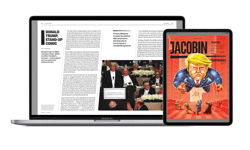Over the last few months, the tech sites and even general news sites, have been awash with rumours about the new iPhone that is now set to be announced on 12 September. These rumours have been accompanied by even wilder rumours of the arrival of a new iPad - currently being called the iPad mini. If it’s true and if Apple are set to do an about-turn and actually produce a seven inch version to compete with similar sized products from Google, Amazon and Samsung, then the publishing world will be thrown into turmoil again as we all frantically work through the costs and benefits of producing another digital edition for another platform. Should it be a simple PDF or should it take advantage of what the device offers.
The digital edition landscape and business model is changing fast and given the above scenario, it is clearly not being allowed to mature or settle in any way - but then that’s just the way it is. The speed of change is frightening, but as publishers and media owners, we have a duty to keep on top of this change and ensure what we are doing is being clearly translated for our relevant audiences, both consumer and commercial.
The need for commercial transparency in the digital edition space is something that Future has been very focused on. As one of the largest tablet publishers in the world, as the AOP consumer digital publisher of the year and as the publisher of T3 – the multi-award winning tablet magazine – we have always felt a responsibility to keep our commercial partners informed about the wider market and our role within it. It is this drive for transparency that has led Future to take a particular stance with regards to recording official circulation figures with the ABC, especially when it comes to keeping advertisers aware of what is going on.
From an advertiser’s point of view, there appears to be two types of digital edition.
The first type of digital edition has all the ads in it and is (in most cases) a very simple digital replica of the print version. Think a simple PDF with no or very little enhancements. T3 sells over 10,000 copies a month in this format – to those Tablet owners who want that level of experience. It is our view that circulation figures for these editions with all the ads in, should not only be included on the same ABC certificate as the print version and listed in the same way as the UK newsstand, subs and overseas figures but they then should be wrapped into the overall ABC figure. Buying a digital replica via Zinio (for example) is no different than buying a copy of a print magazine from Tesco. Same audience, same editorial, similar price and most importantly, the same ads. The only slight complication is for those fully enhanced digital editions that carry all the ads. Think Wired or GQ. Personally I feel these should be treated in the same way, with the fact that they carry all the ads from the print version being a key element of the categorisation. This means that an advertiser, be that agency of client, can truly and accurately see how many editions their advert appeared in.
The second type of digital edition is the one that doesn’t have all the ads in. Obvious really. In this instance think the fully enhanced Tablet mags with video, hot spots, galleries to swipe, 360s to spin and all manner of interaction to play with. Think Empire, Total Film, Evo, Stuff, The Week, Edge, MacFormat and the UK's market leader T3. These enhanced digital editions don’t carry the ads from the print version as they see themselves as new platforms offering much deeper and more integrated advertising solutions to brands to take advantage off. They allow brands to deliver even greater cut-through and impact without the clutter of countless flat un-interactive ads. But given that these digital editions do not carry add the ads, they need to be measured in an entirely different way. This is why the Digital Publications Certificate was set up, to shine a light on the new commercial opportunities being generated by these new platforms. There are many, many other metrics that can be used to measure the value of such publications, but it’s clear that there is a real demand for a simple, comparable and consistent circulation figure.
T3 was the first to take advantage of this new certificate and we have received exceptionally positive response from both clients and media agencies. The figure of 17,682, 25% up on the previous independent audit in February, makes T3 the biggest enhanced edition in the UK And in the first six months of 2012, Future has launched a number of new enhanced digital editions (that don’t have all the ads in) including Total Film, Edge and MacFormat. These will be using the Digital Publications Certificate for July-Dec 2012 and from then on.
Going forward, I hope ABC agrees that digital replicas with all the ads in are finally included in the headline circulation figure. And I hope that those publishers who are producing digital editions that don’t have all the ads follow Future’s lead and start using the Digital Publications Certificate.












